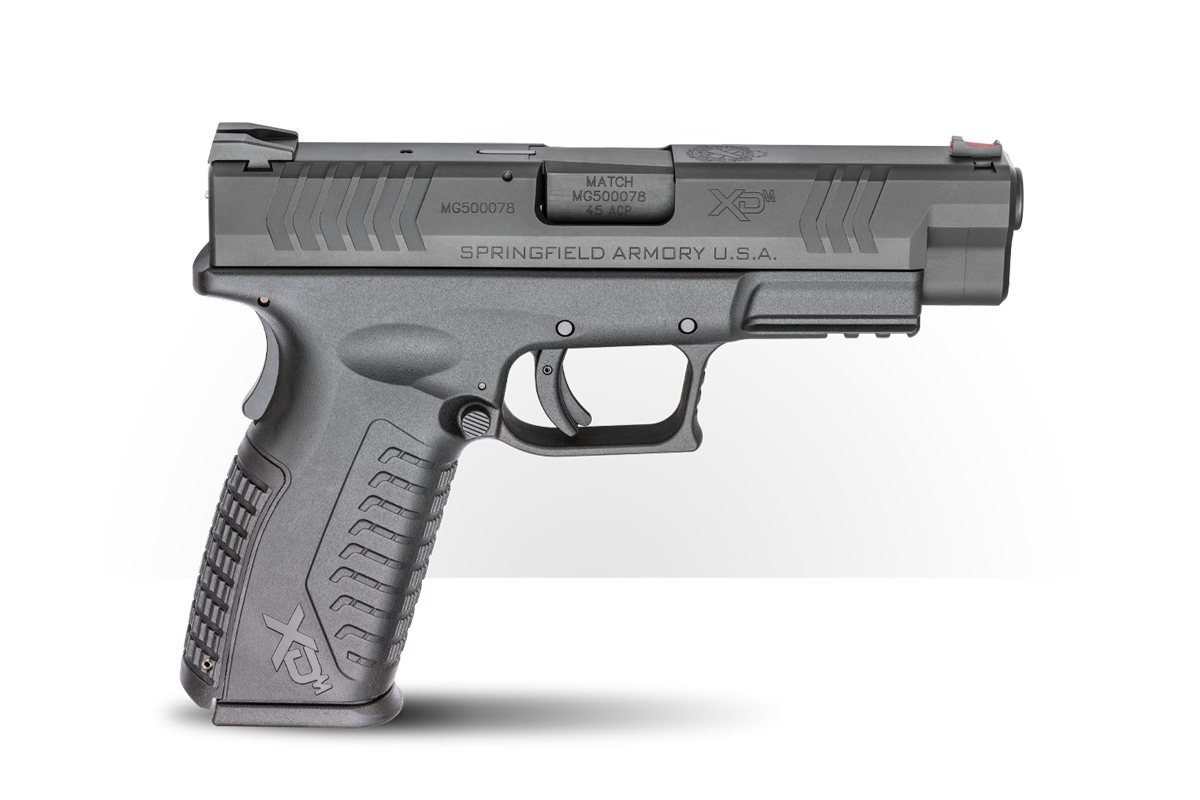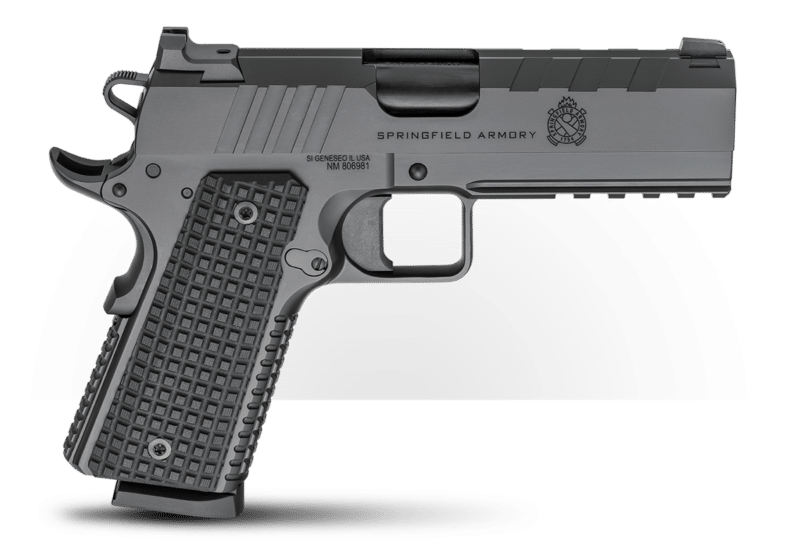Could You Weak-Hand Draw If You Had To?
June 17th, 2021
8 minute read
Editor’s Note: Practice these weak-handed drawing techniques only with triple-checked unloaded guns, or better yet, with identical-size unshootable dummy guns.
A while back, I did an article for The Armory Life on left-handed manipulation of a 1911 pistol, particularly one that didn’t have an ambidextrous thumb safety. You can find it here. I explained that these issues weren’t only for southpaws, but could also befall a right-handed shooter whose gun hand or gun arm had been taken out of action.
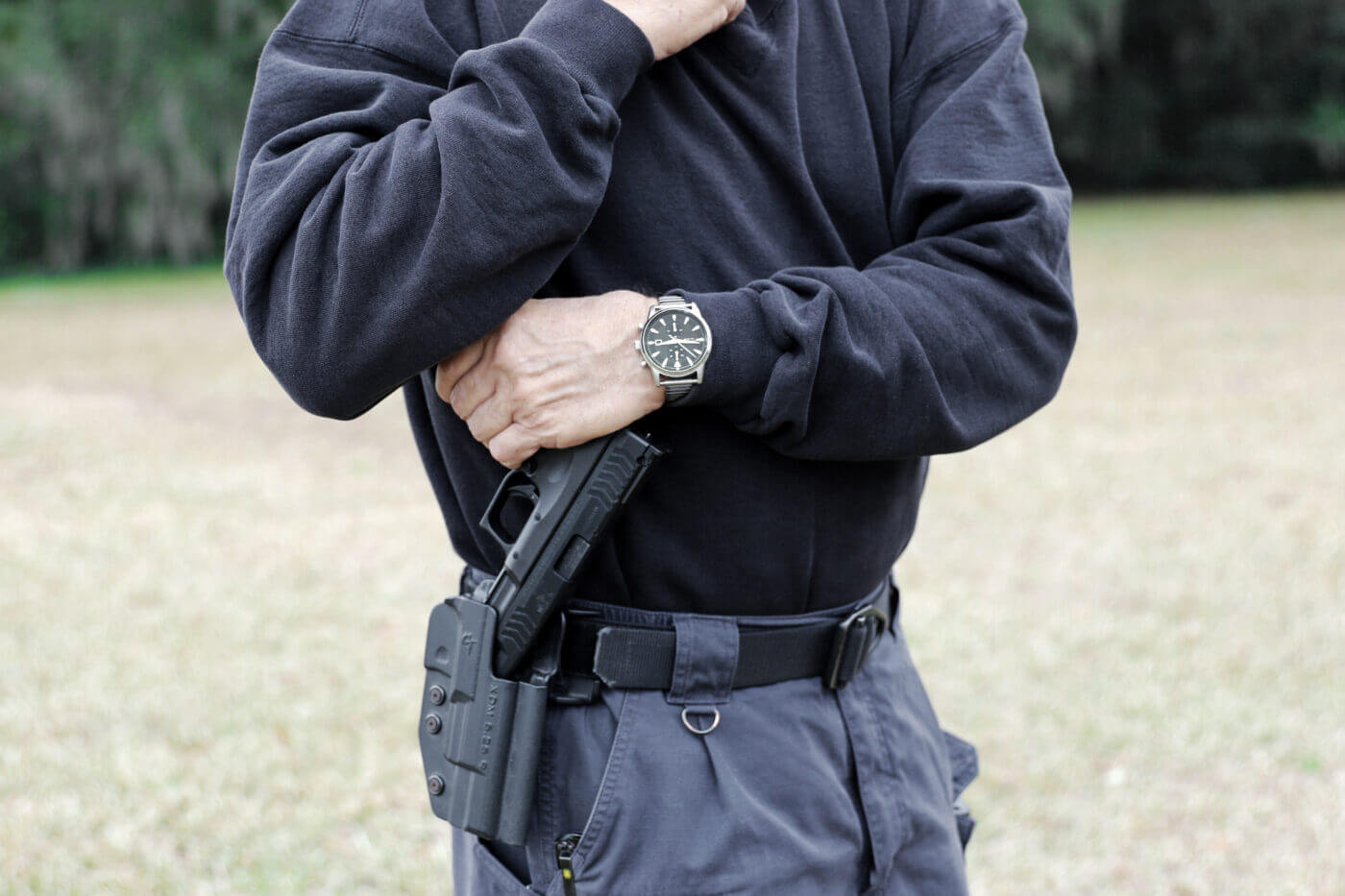
At the end of that article, I mentioned that a weak-hand draw from a strong-side holster was another matter entirely and would have to be dealt with at some time in the future. Editor Mike Humphries told me, essentially, “That future is now.” So here we go.
Where Is That Damn Holster?
Whether mounted on the belt or hanging from a shoulder harness, a holster on the side of your hip or torso opposite from your “gun hand” is known as a “cross draw.” Because it’s on the same side of the body as the non-dominant hand, it’s fairly easy to reach for weak hand draw. During the draw, your palm will be facing outward and the back of your hand toward your torso.
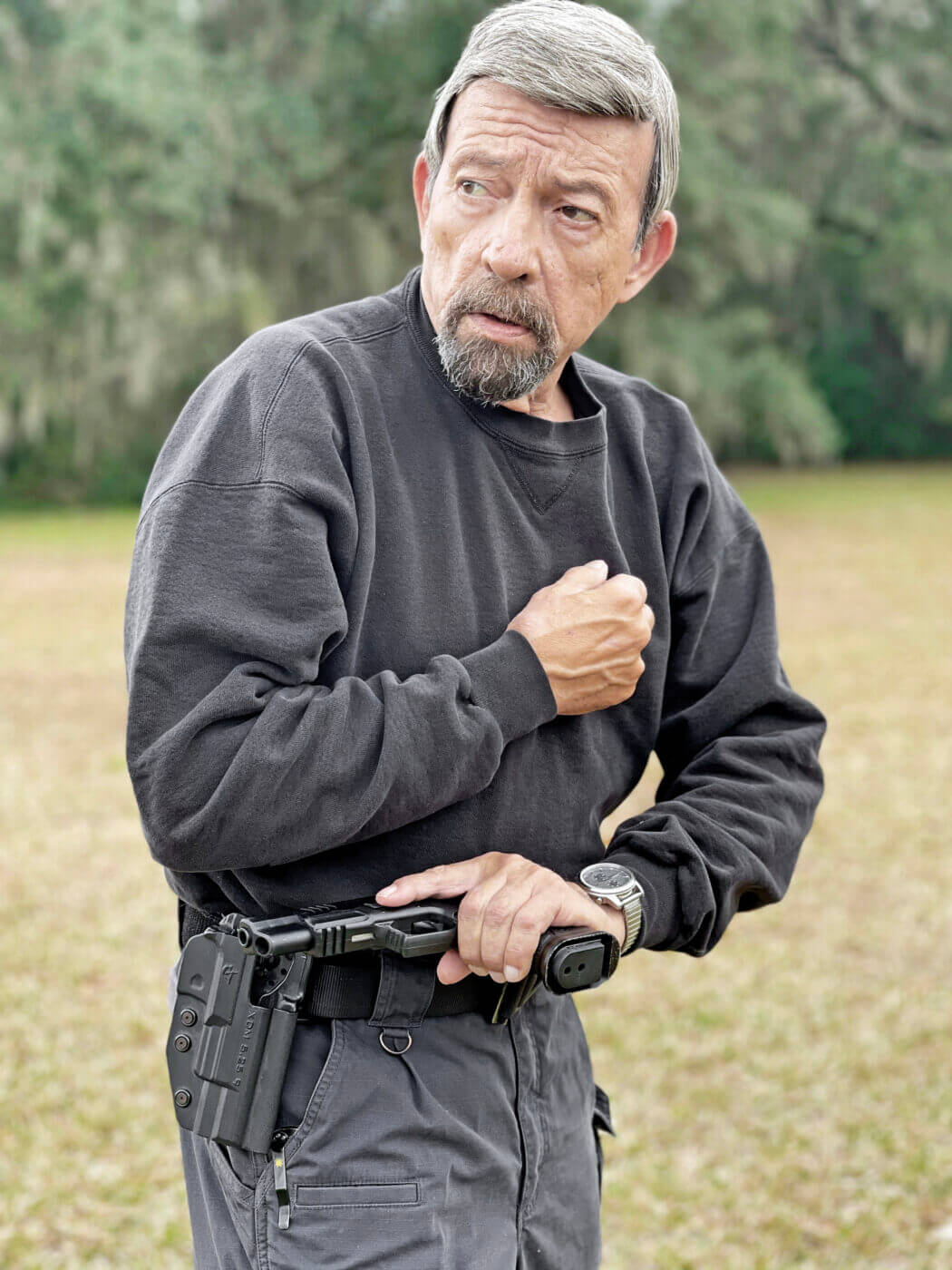
Leave the butt pointing upward as you draw until the muzzle is at least 45 degrees in front of your body before you turn the gun upright in a firing position so you don’t cross your body with the muzzle as you draw. This was called the “Cavalry Draw” because in the 19th century, a cavalry officer who was right-handed wore his saber on his left side for right hand cross-draw, and his revolver on his gun hand side, butt-forward.
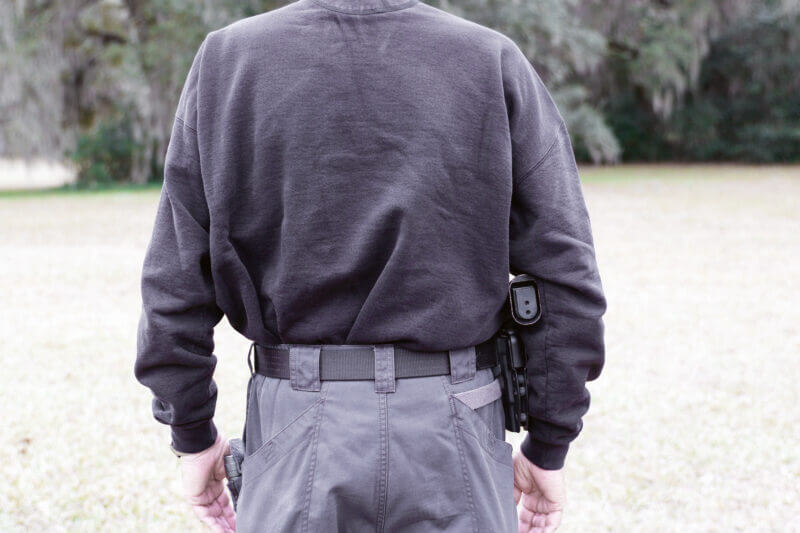
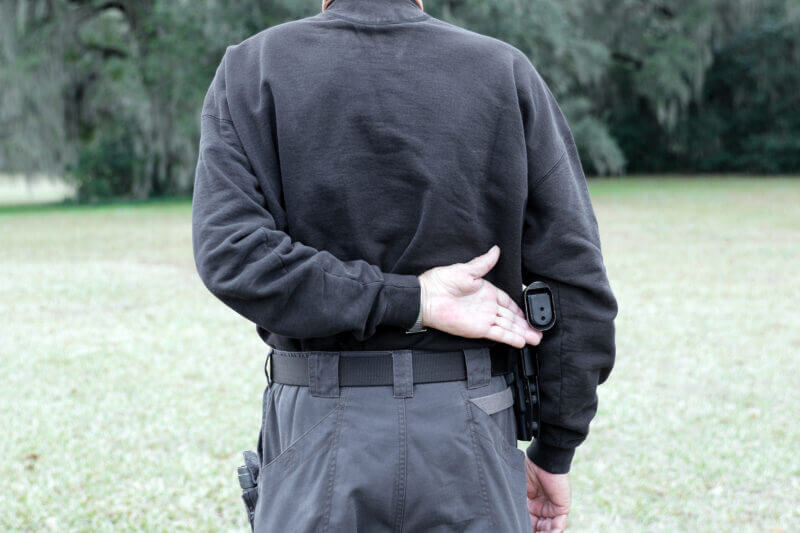
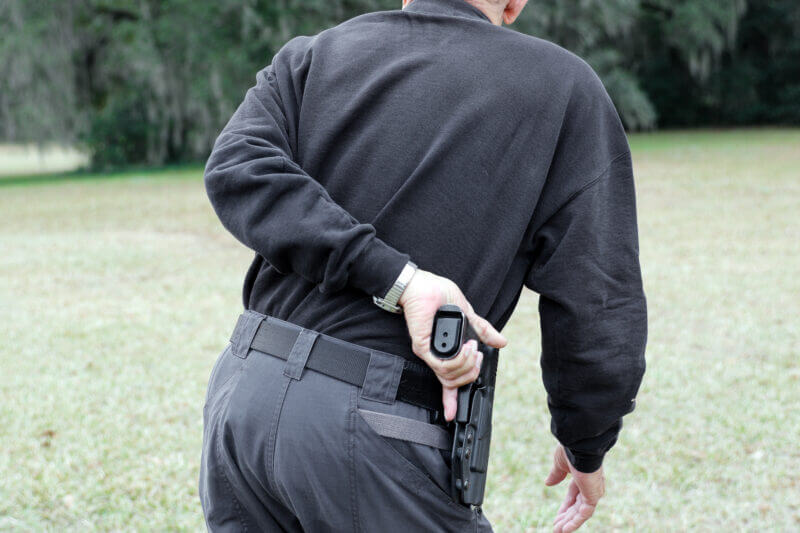
Is your gun in an ankle holster? It is generally accepted that for a combination of speed of access and daily concealability, the butt should be to the rear and the holster strapped to the inside of a right-handed user’s left ankle. In the best of all worlds, the left hand pulls up the trouser leg to clear access as the right hand makes the draw. (Vice versa for southpaws, of course). With the right hand out of the picture, the left hand will have to both lift the pants cuff and draw the pistol: slower, but still quite “do-able” unless there are severe range of movement issues.
At or near front centerline of the body — think AIWB (Appendix Inside WaistBand) carry — one needs simply to turn the palm outward and do a variation of the cavalry draw. At rear centerline — MOB (Middle Of Back) — a weak-hand draw is easy, but I respectfully submit that this carry position has so many negatives that they totally outweigh this positive feature.
Most concealed carriers, and virtually all uniformed police, carry strong side hip: 3 o’clock to 4:30 or so if the clockface is a human body in cross section, and the navel is 12 o’clock. So, let’s work on that.
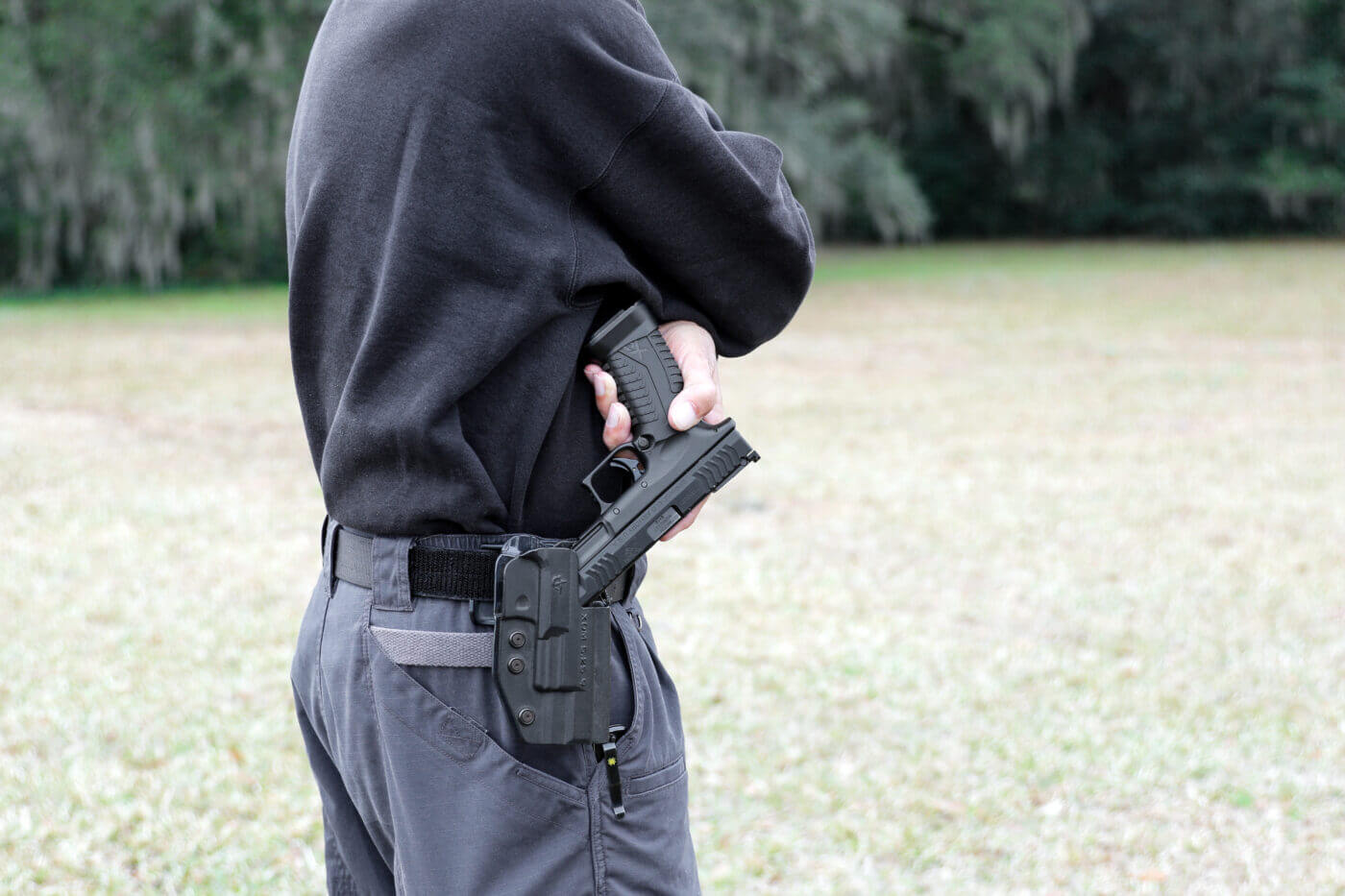
I started teaching weak-hand draws in the early 1970s when I first started seriously and personally debriefing gunfight survivors. I interviewed two Boston cops who had been shot down and severely wounded by a suspect who pulled a gun on them by surprise. The first fell face down with a wound that paralyzed him temporarily from the waist down. He tried desperately to reach behind his back for his .38, and couldn’t; it was in an unsecured swivel holster as he fell, and had ended up with the back of the grip on the pavement and the muzzle pointed skyward. The same could happen if the good guy was wounded and landed on his or her back.
So, we need techniques that can get to the gun from the front or the back.
I came up with a universal rule for this sort of thing: use your whole body to bring the weapon and holster closer to the reaching hand!
Behind the Back Draw
Your handgun is, let’s say, on your right hip when your right arm is taken out of action and you have to grab the pistol with your non-dominant hand. If you are facing the threat at 12 o’clock, pivot your gun-side hip as close to 6 o’clock as you can. This helps bring the pistol in reach of the opposite-side hand. If the situation allows, raise your right shoulder and lower your left shoulder; this will give you still more range of movement.
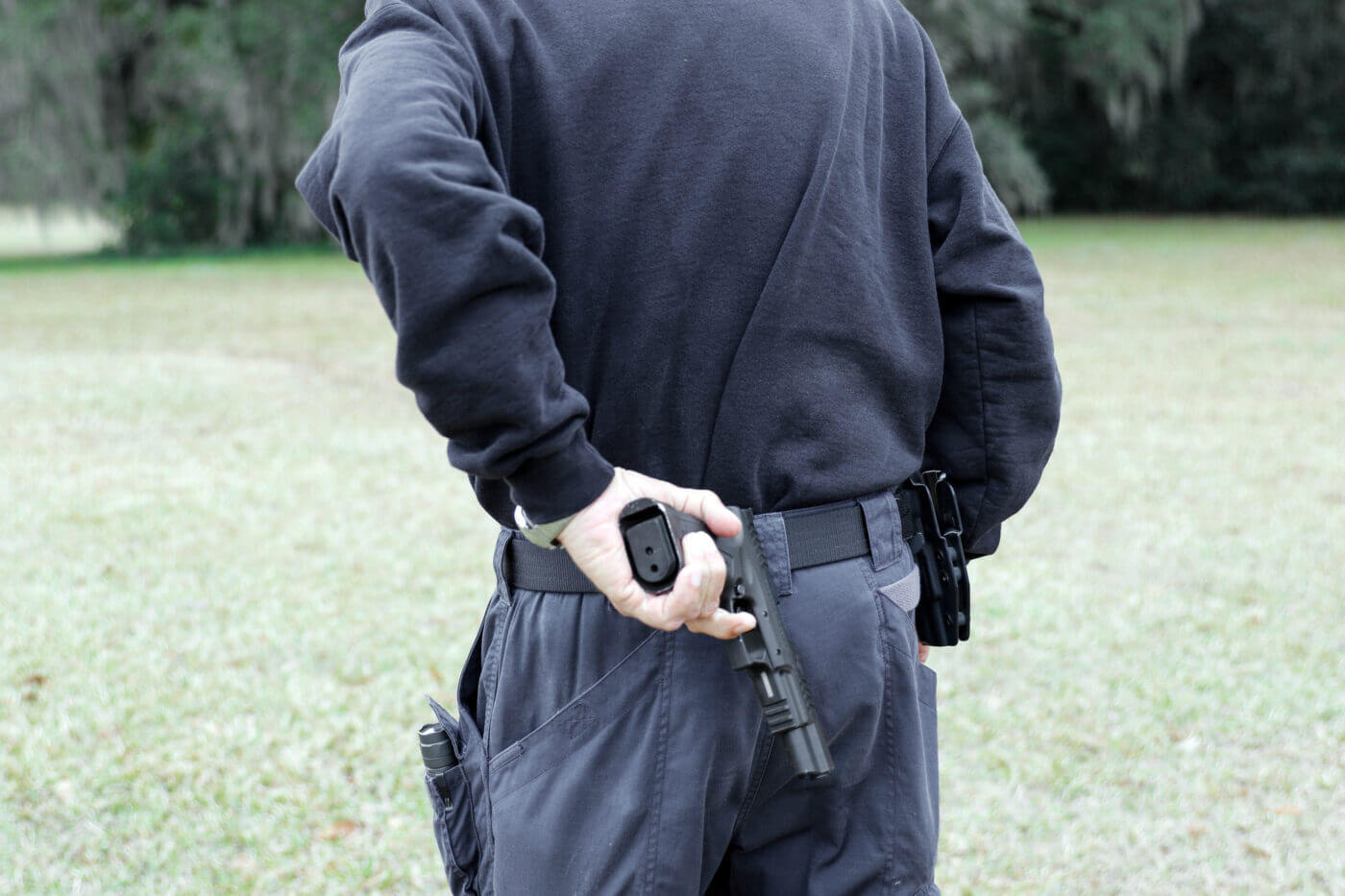
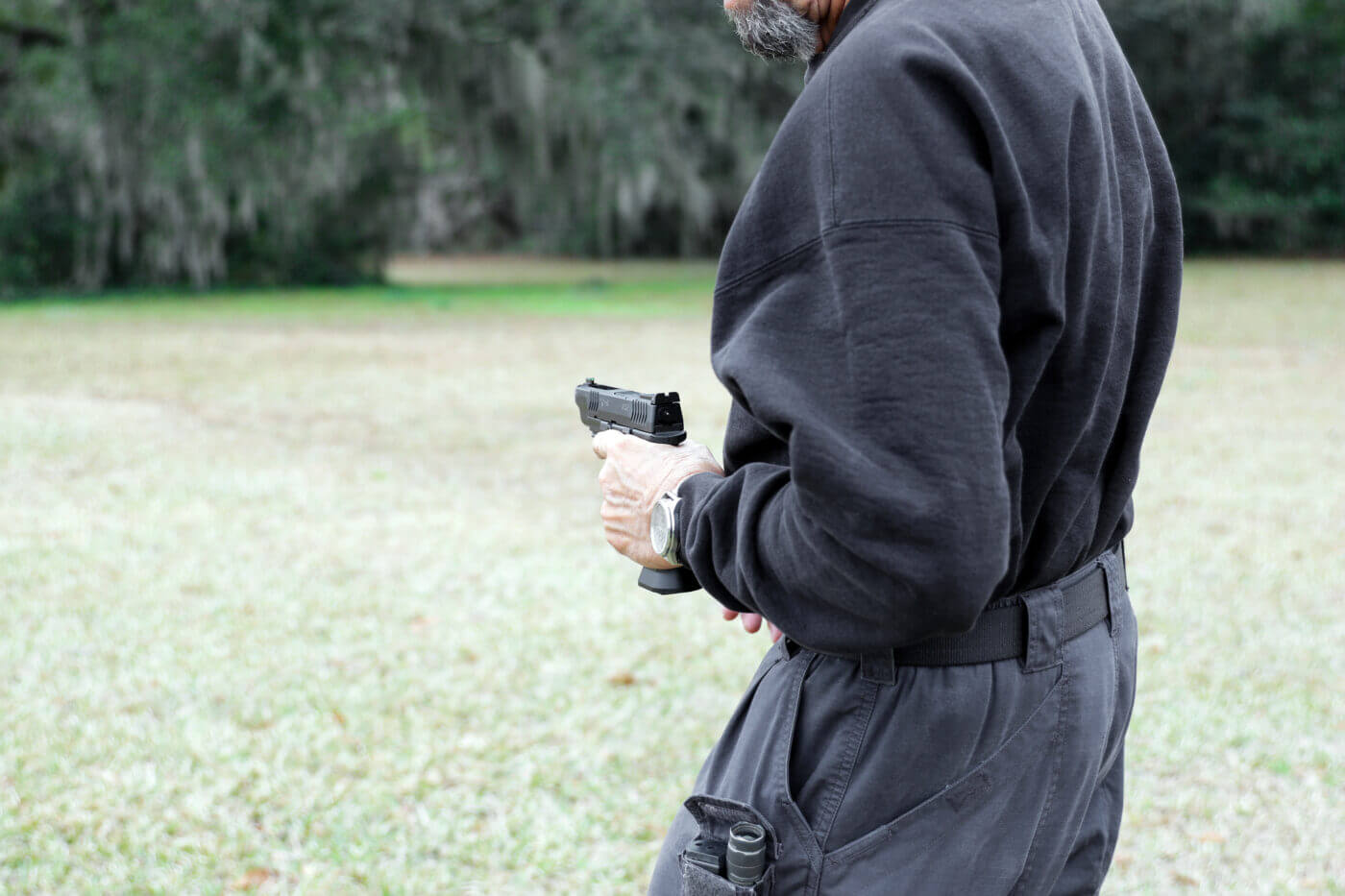
Your hand and arm are going to want to pull the gun to the rear. DON’T!! Your holster often won’t allow it. Pull the gun UPWARD until you feel it come free. You will probably not have a perfect hold. That’s okay: just grasp it firmly, keeping fingers away from the trigger, and keeping the muzzle pointed down at the ground behind you, bring it around to the front.
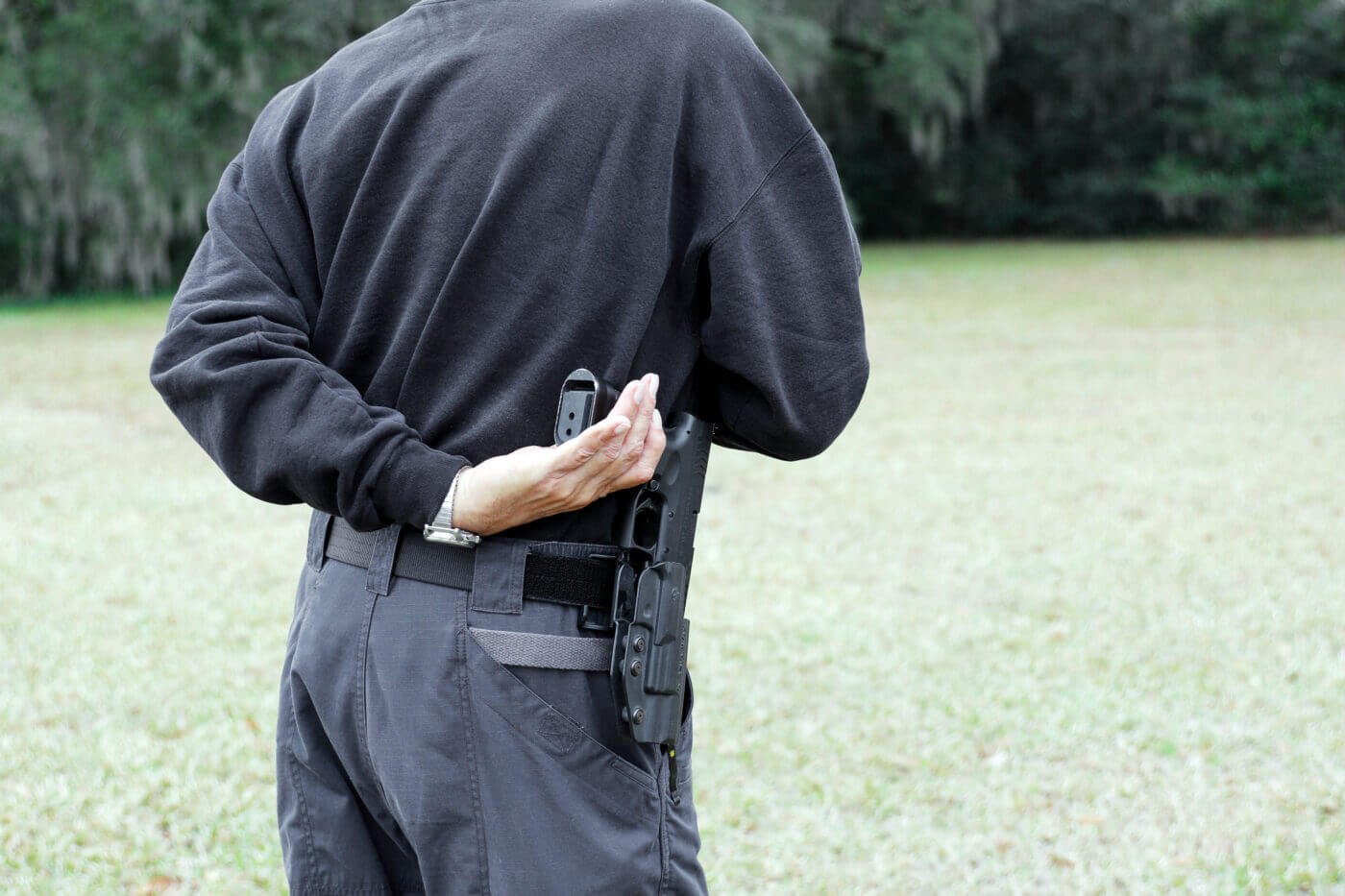
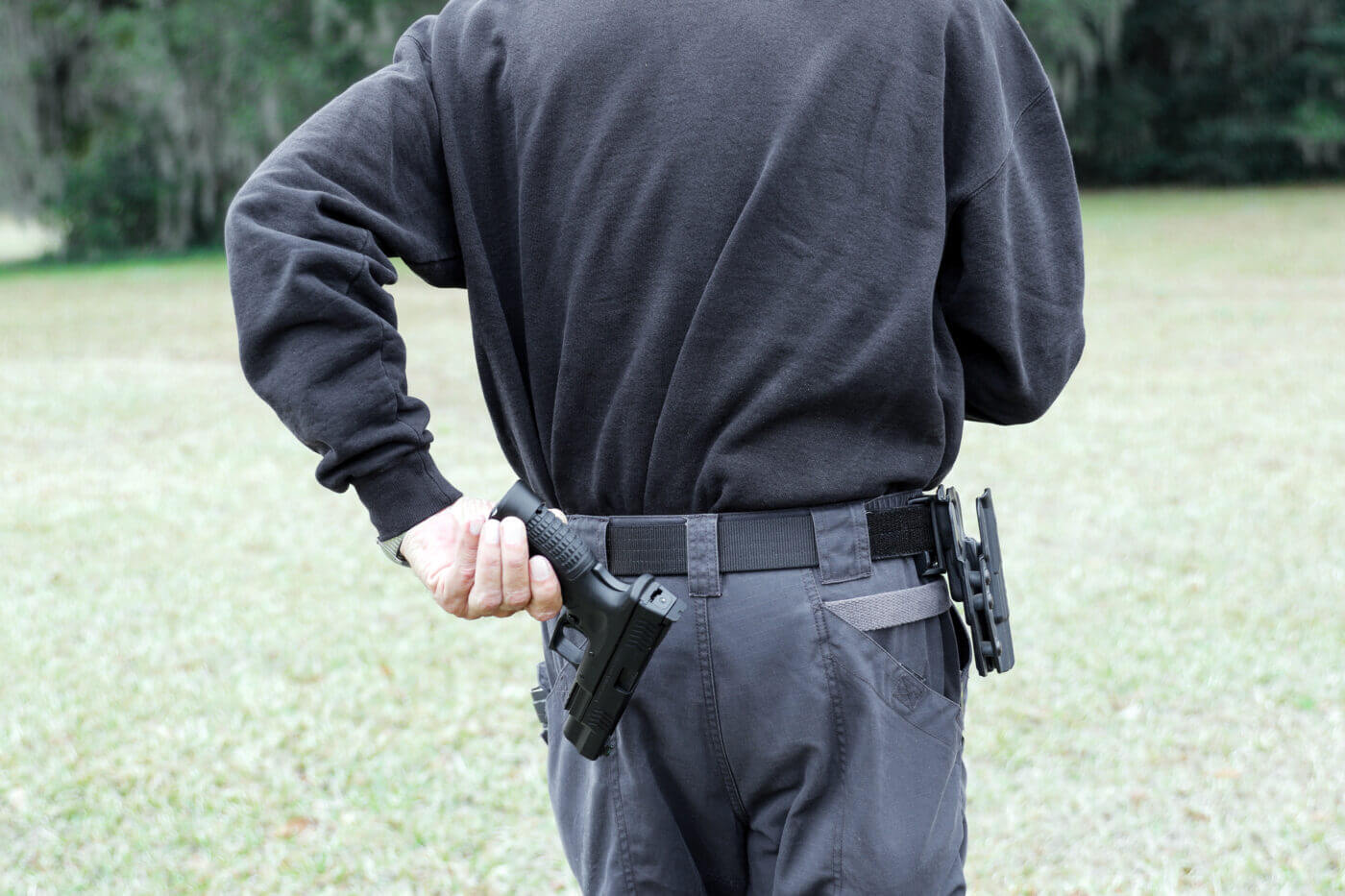
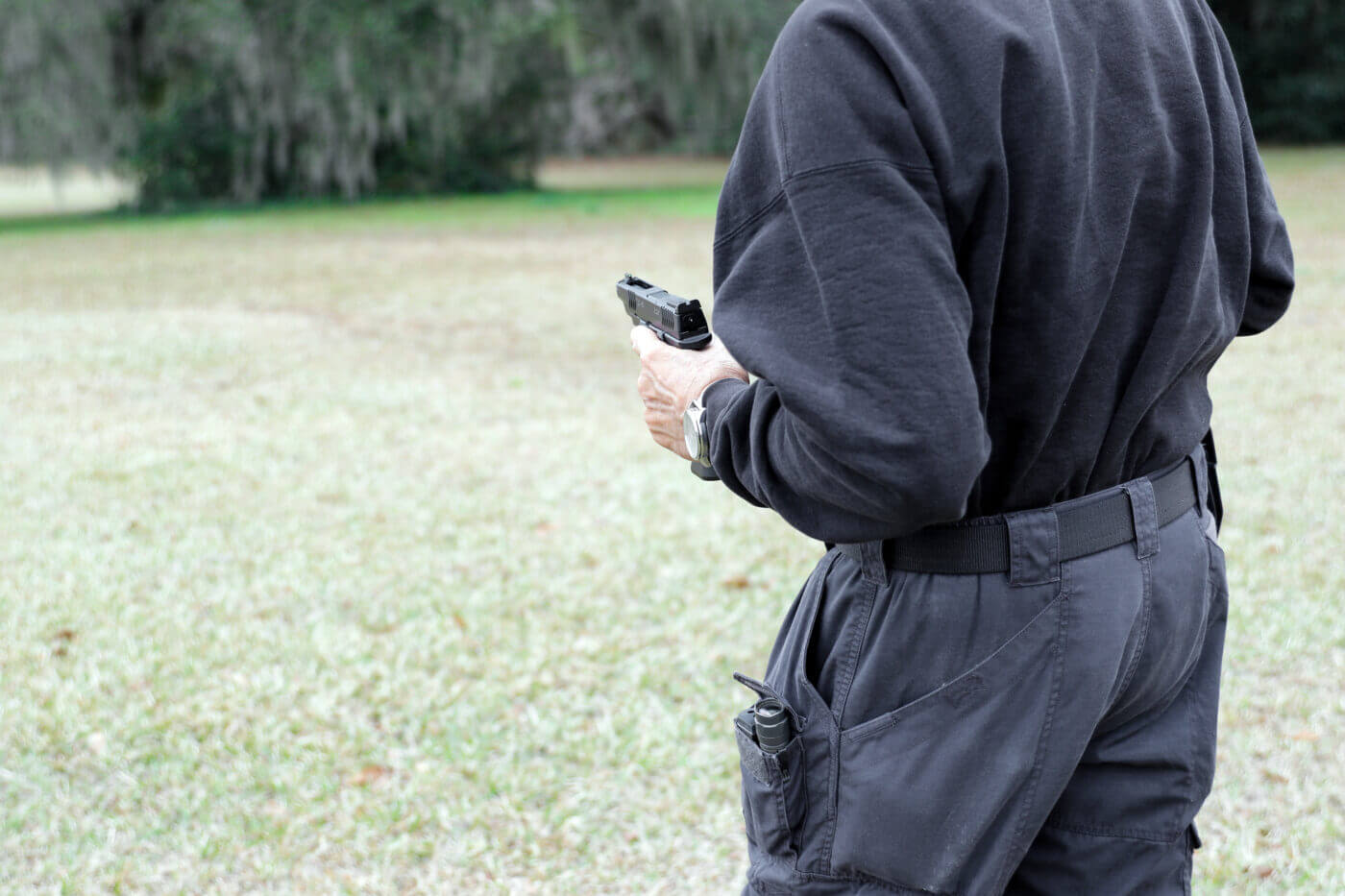
Only when it’s pointed forward should you complete the grasp: simply release finger pressure LIGHTLY, and gravity will let the gun fall back into your appropriate hold. Re-grip tightly, and you’re ready to fight back. If you have a really poor grasp, use your palm to push the gun up out of the scabbard, then bring it around and forward as described above.
Across the Front Draw
Choice of technique depends heavily on range of movement here. There are some people – males with “swimmer’s builds,” and a lot of females whose hips are higher and torsos shorter and therefore have more reach than their brothers of the same height – who can simply reach over, take a firing grasp of the pistol, and come up shooting. More power to ‘em: most of us can’t. (Though I should note, a thigh holster can make this easier due to flexibility at the pelvis/head of femur area.)
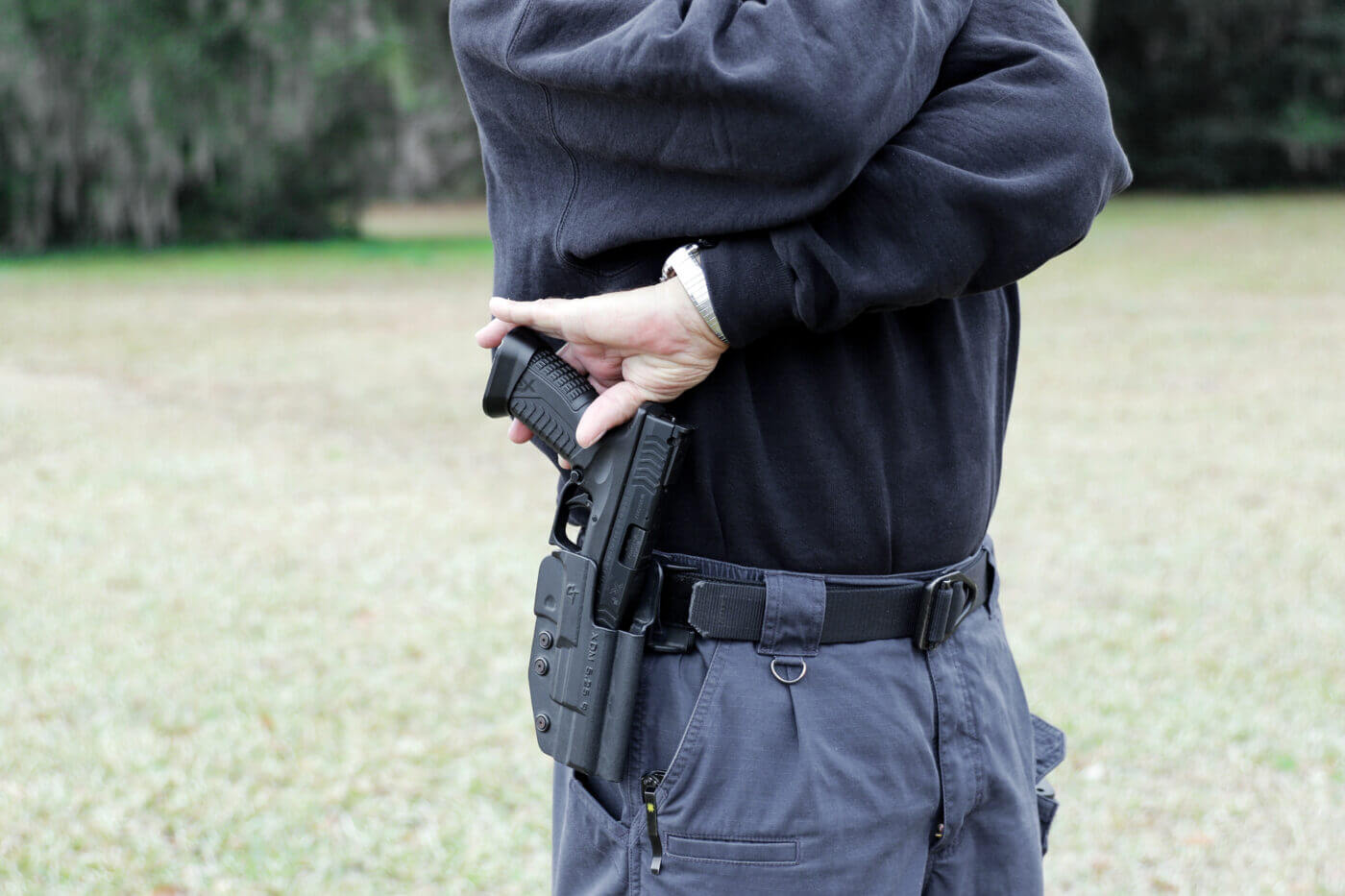
Once again, pivot the holstered weapon toward the reaching hand. If the target is at 12 o’clock and the hip holster at 3 o’clock on your body, pivot that hip toward 12 o’clock. Some shooters will have enough flexibility and range of movement to do a sort of cross-body cavalry draw. That is, the palm is pointed outward toward the threat and thumb down as you reach for the wrong-side hip holster. As you draw, bring the muzzle up in a circle (which may cross your injured right arm and will certainly cross anyone behind you and perhaps those to the side), and the gun is quickly on target.
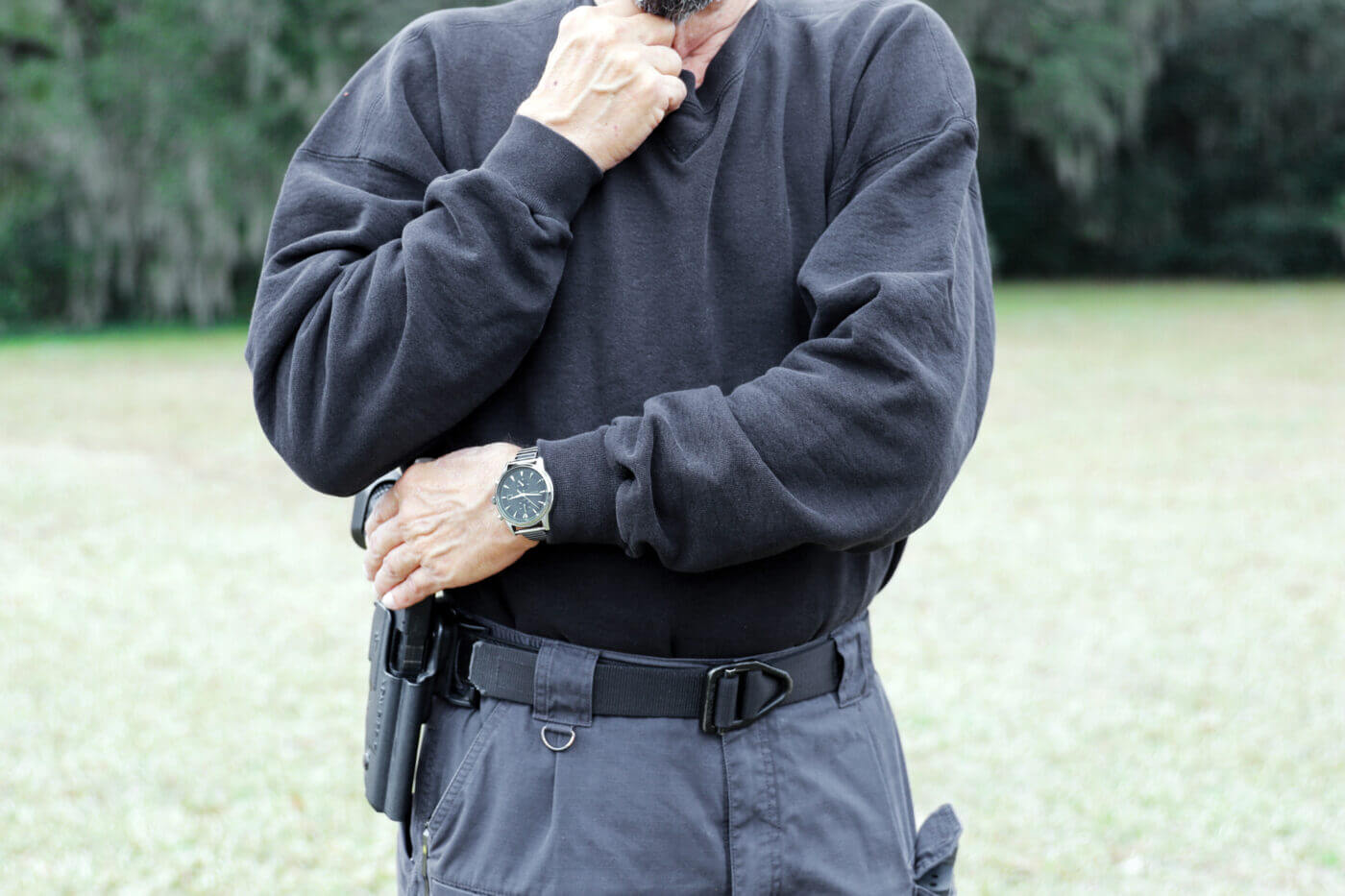
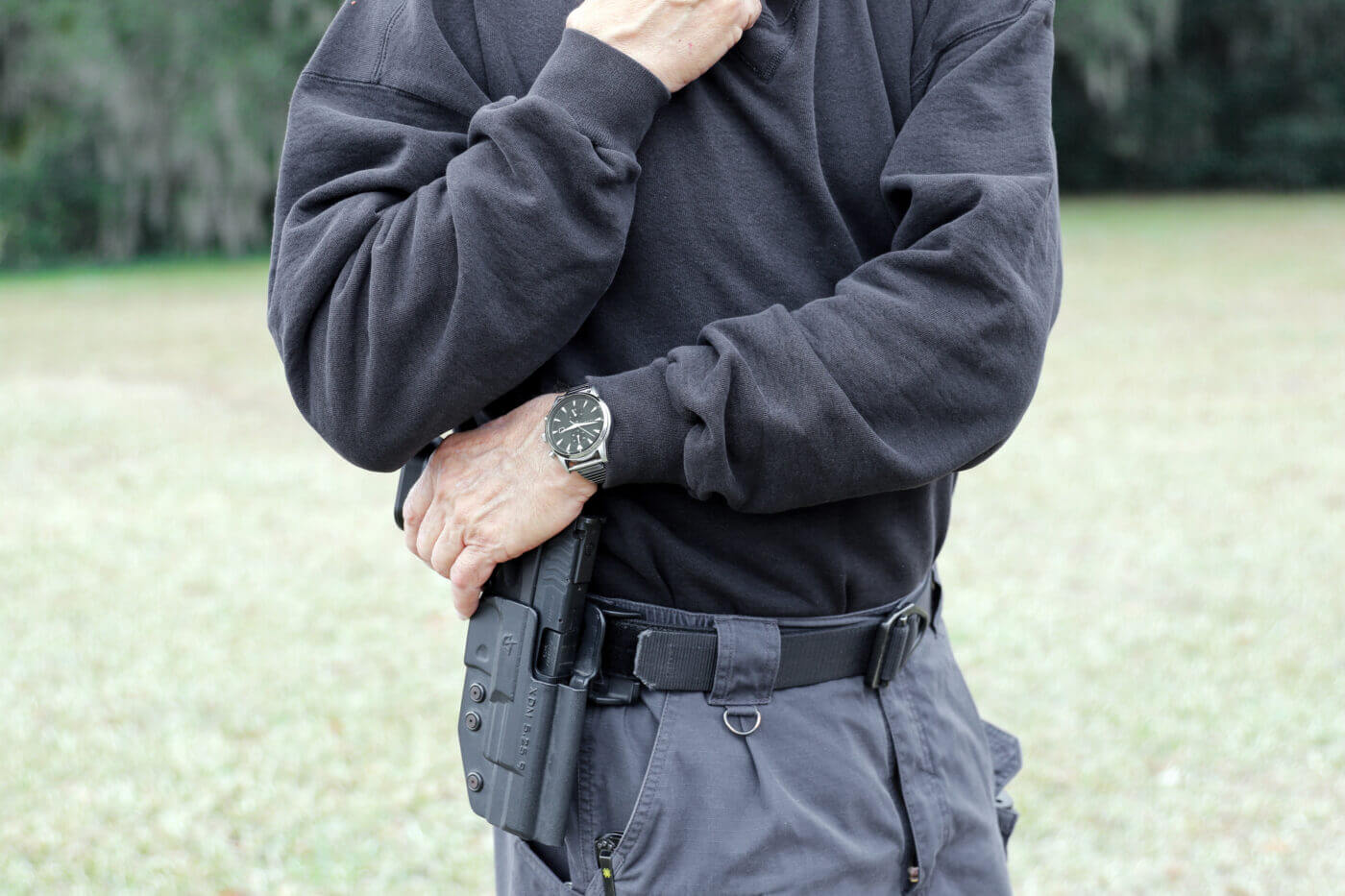
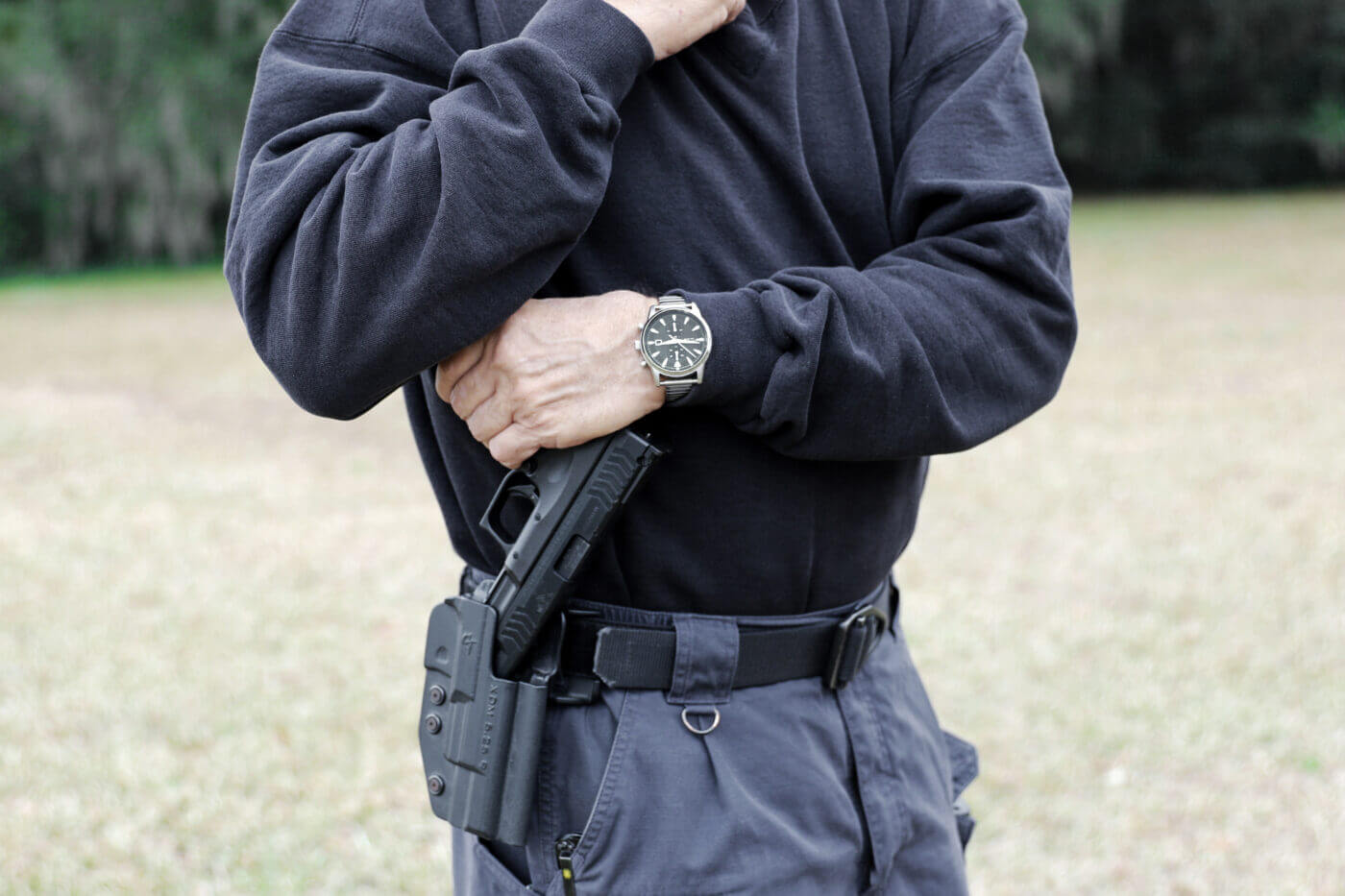
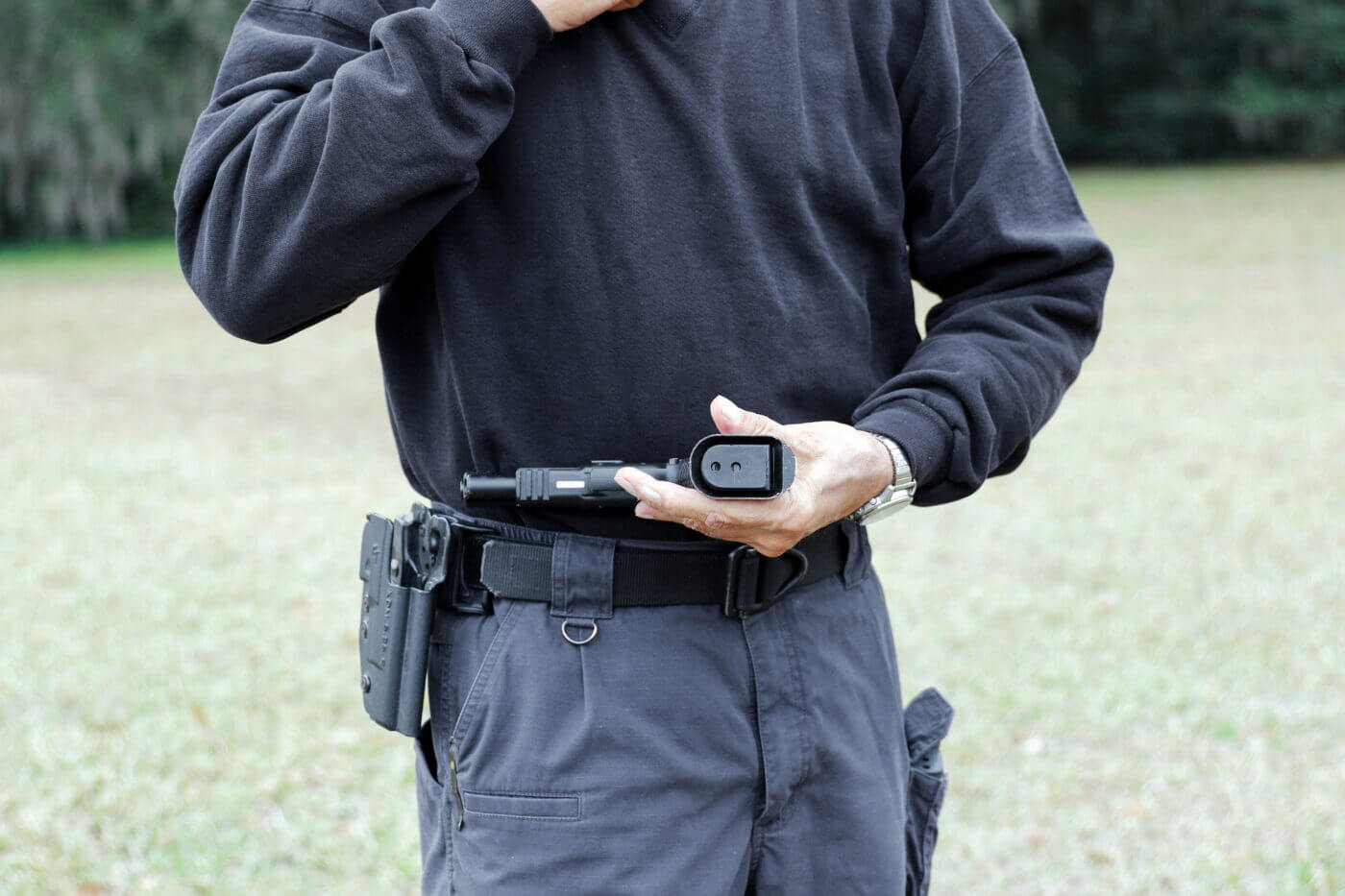
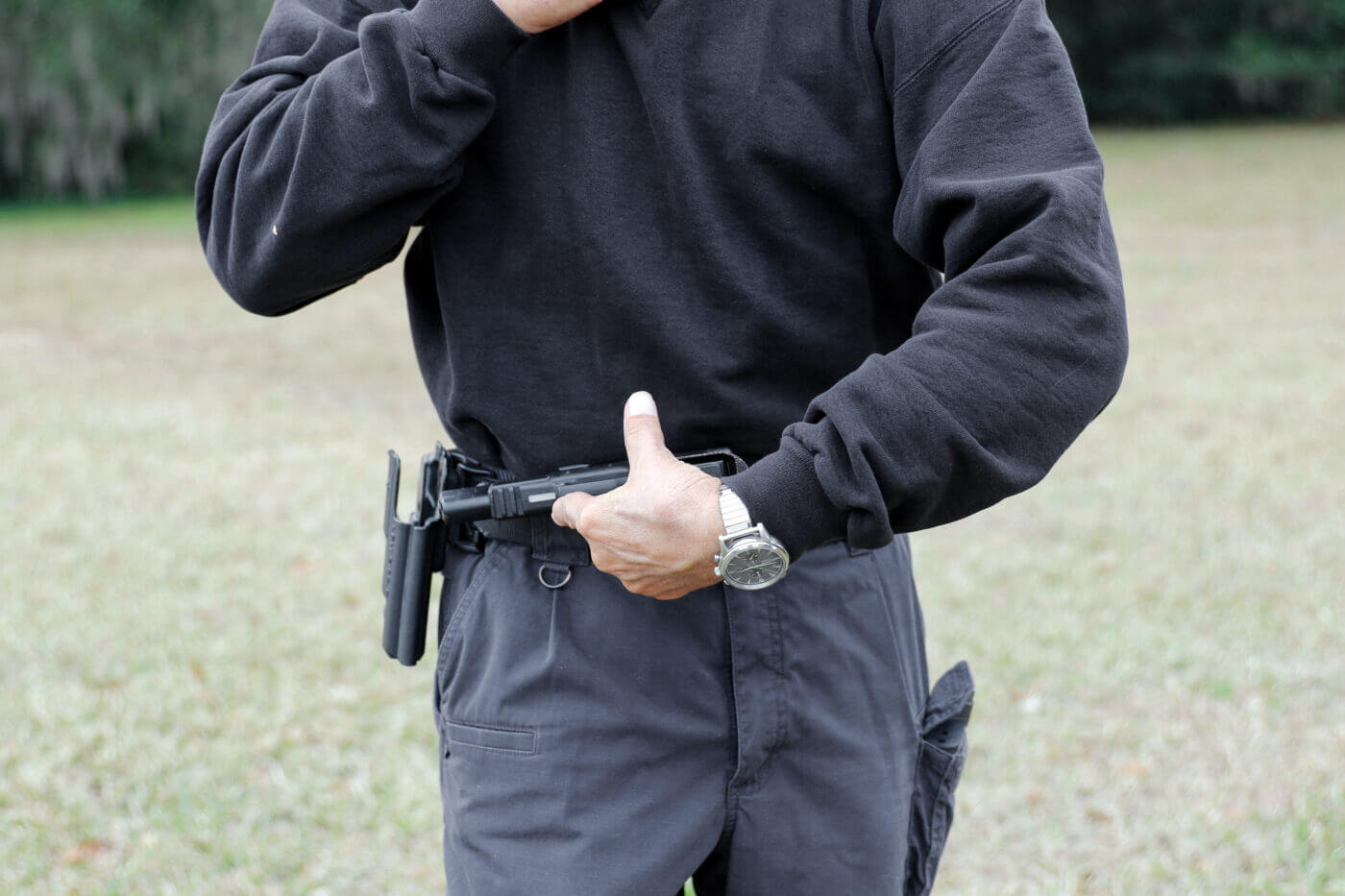
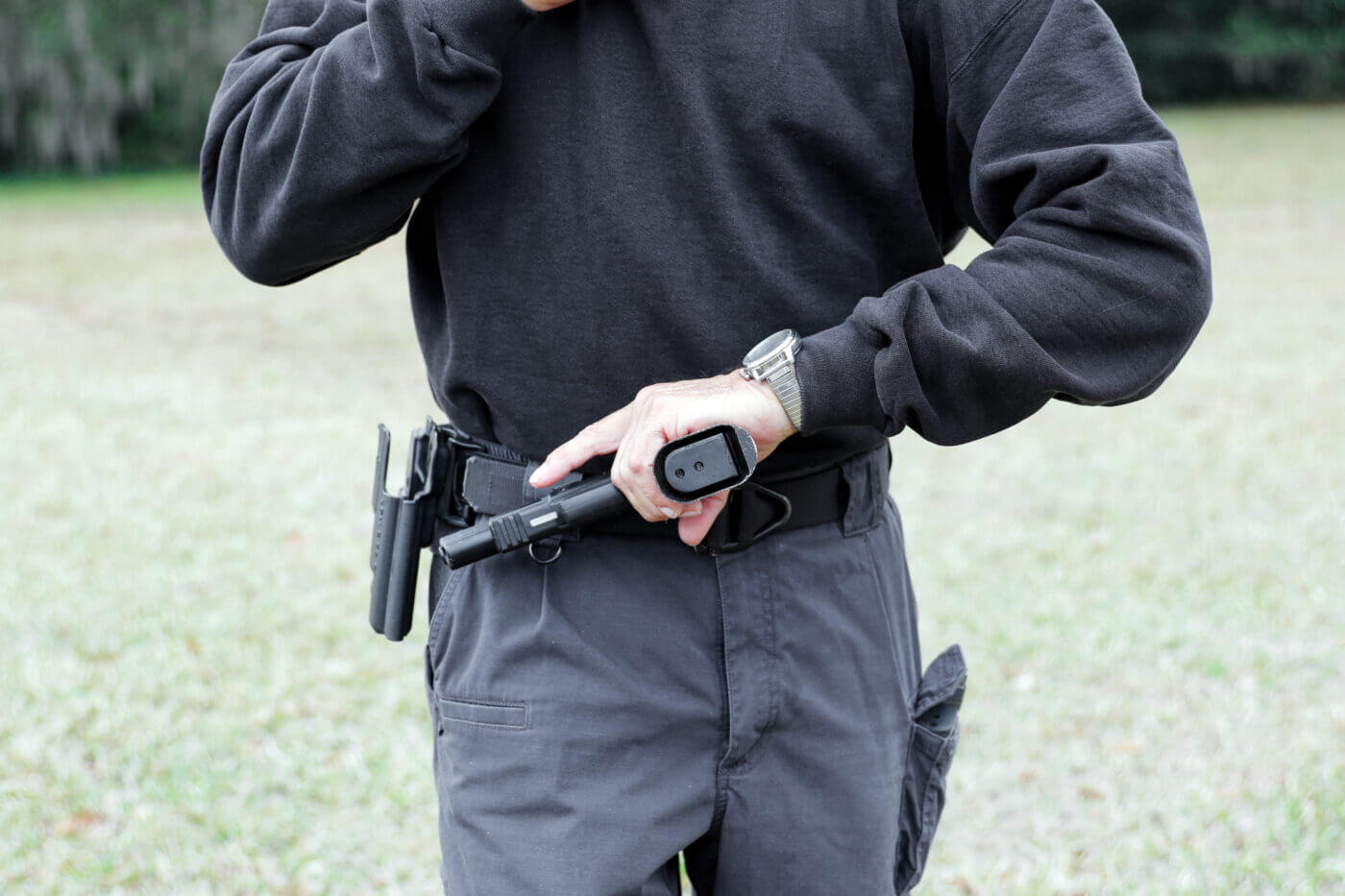
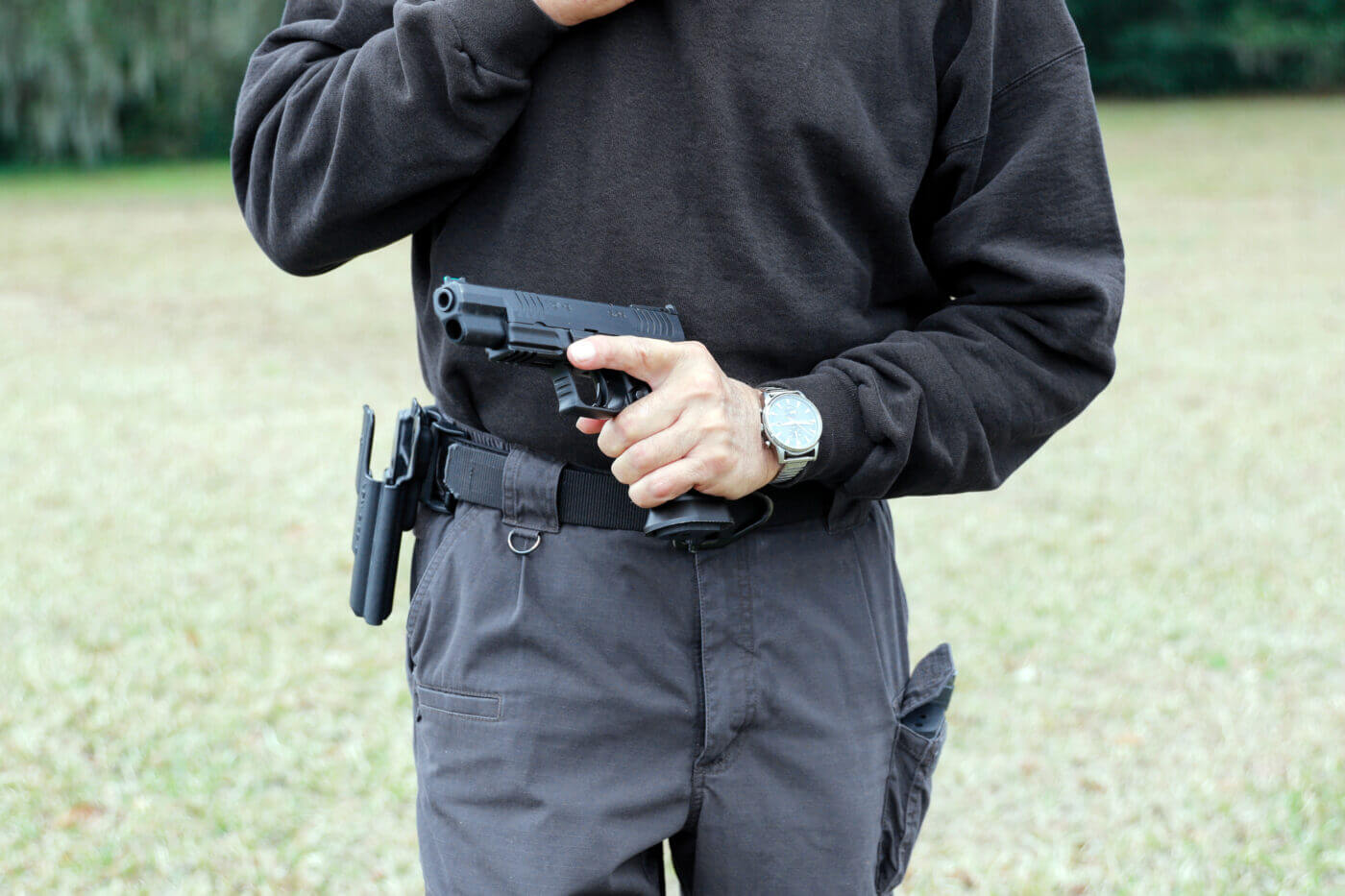
These are not, however, universal techniques. Half or more of the people I’ve trained didn’t have the range of movement to do it reliably. For many years I taught the Washburn Technique, developed by Rick Washburn, a firearms instructor for the Berkeley Township, NJ police: Reach over, grab the grip upside down, pull it partway out of the holster, then turn it butt forward in the holster and do a regular cross-draw. Six-shooters were standard when he came up with that, and it worked fine for drawing with your weak hand with narrow barrel revolvers. Flat-sided autos, not so much, and it was impossible with light-equipped duty pistols in Kydex holsters.
My universal default technique from the front is what I call a Roll-Over. Again, pivot the holster toward reaching hand. Grab grip-frame upside-down. Bring the top of your slide against your abdomen, pointed to the side parallel to the ground. (Yes, unfortunately, it WILL cross anyone beside you on the firing line — so do not practice it in that case!) Now, KEEP YOUR FINGERS UNDER THE GUN AND ROTATE YOUR PALM ACROSS THE BUTT. This brings you into firing hold, the finger of course OFF THE TRIGGER. Bring the muzzle on target, and now you’re ready to fire.
If You Can’t Do Any Of These …
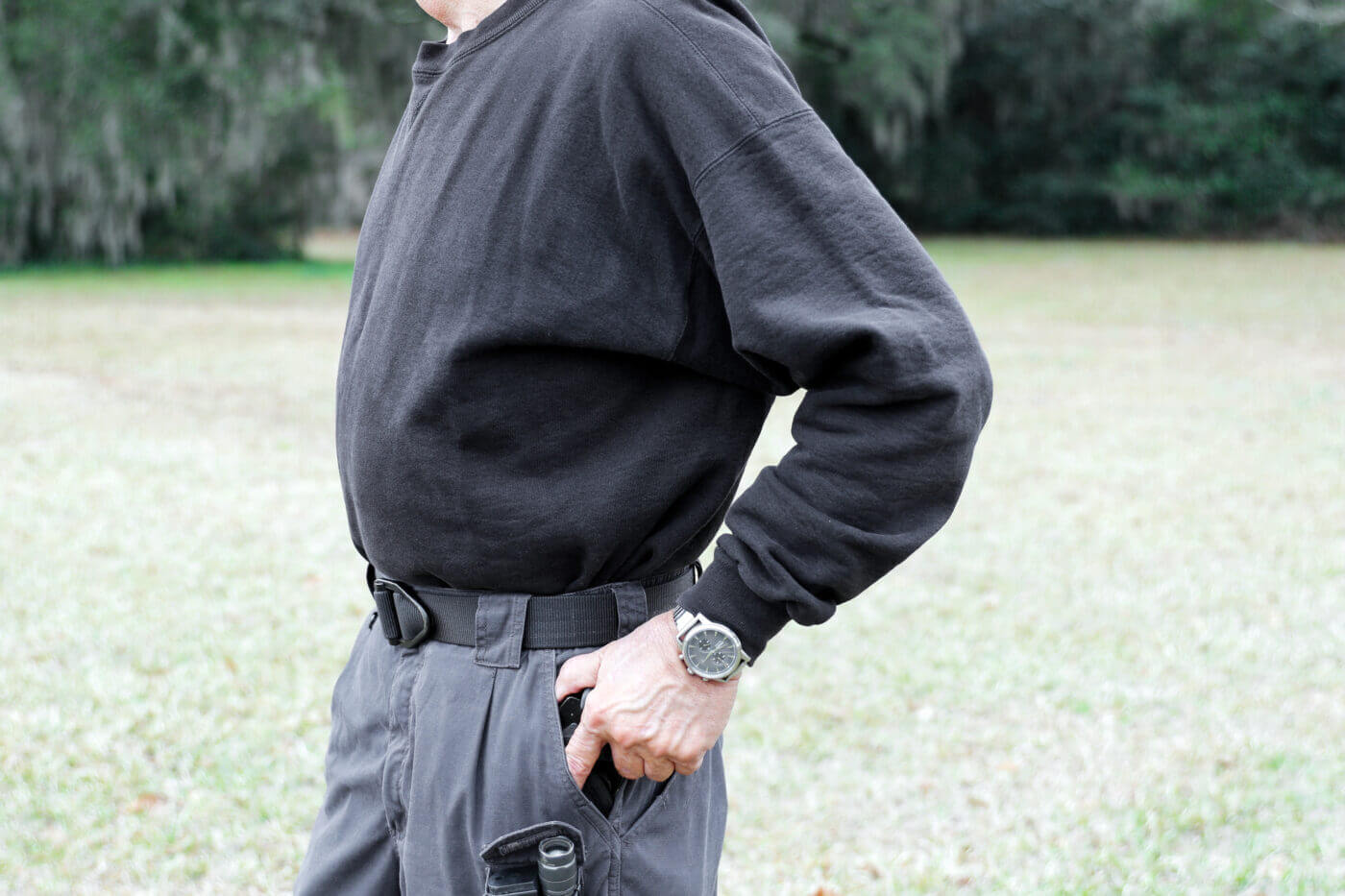
Some people simply don’t have the range of body movement to allow a weak-hand draw from a strong-side hip holster. It might be abdominal girth, broad chest, thick arms, heavy clothing, body armor or tactical load-bearing vest, or all of the above. If this is true of you, it is simply Nature’s way of warning you that you need to carry a backup gun where your non-dominant hand can reach it!
Safety Above All
In my classes, I’ve never allowed loaded guns to be drawn in this fashion. Muzzles can be expected to cross others on a square range firing line. Practice these techniques only with triple-checked unloaded guns, or better yet, with identical-size unshootable dummy guns.
Editor’s Note: Please be sure to check out The Armory Life Forum, where you can comment about our daily articles, as well as just talk guns and gear. Click the “Go To Forum Thread” link below to jump in!
Join the Discussion
Featured in this article
Continue Reading
Did you enjoy this article?

 201
201




